Main menu
Common skin conditions

NEWS
Join DermNet PRO
Read more
Quick links
Authors: Dr Amanda Oakley, Dermatologist, Hamilton, New Zealand, 1997; Updated: Elena Redl, Medical Student, University of Vienna, Austria; Dr Martin Keefe, Dermatologist, Christchurch, New Zealand. Copy edited by Gus Mitchell. May 2021
Introduction
Demographics
Causes
Clinical features
Diagnosis
Differential diagnoses
Treatment
Outcome
Dermographism is an exaggerated weal and flare response that occurs within minutes of the skin being stroked or scratched. Dermographism is the most common form of physical or chronic inducible urticaria. It is also called dermatographia and dermographic urticaria.
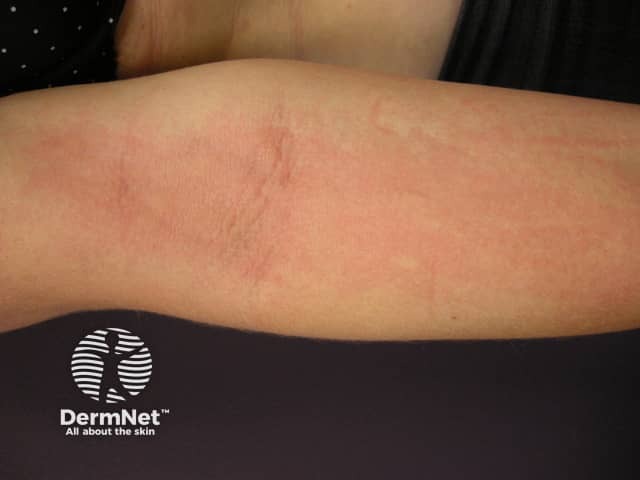
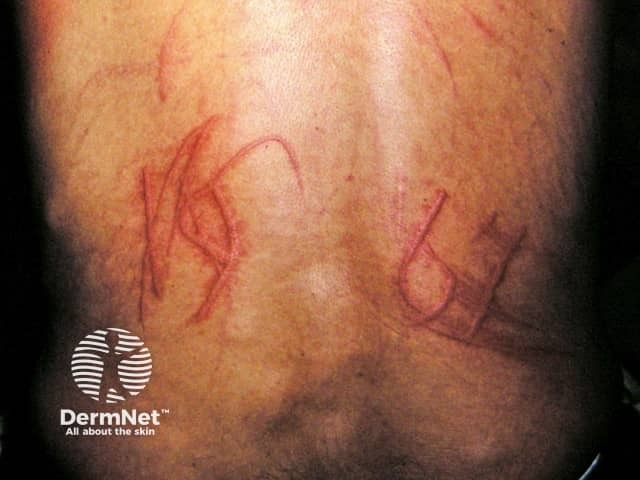
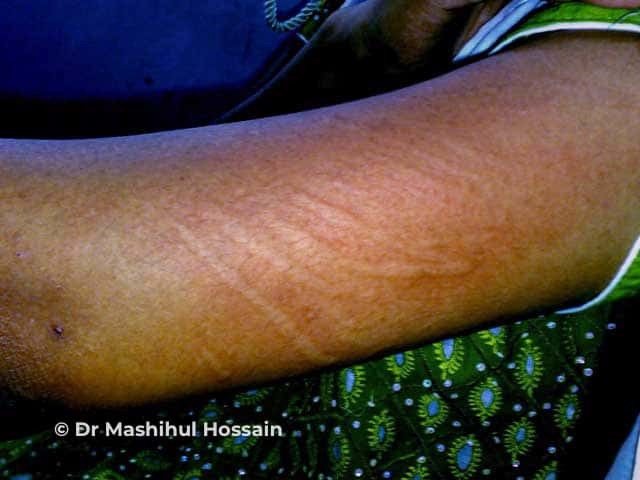
Dermographism: arm
Dermographism can appear at any age, including children, but onset is most common in young adults. There does not appear to be any racial predilection or differences between the sexes. Some studies have reported a positive family history (OMIM 125635).
In 25–50% of people, firm stroking of the skin first produces a red flare, then slight swelling along the line of the stroke. In 5% of the population, this response is exaggerated enough to be called dermographism. Only in a minority of cases does it cause symptoms.
Most people with dermographism are otherwise healthy. Dermographism can be seen in association with scabies and some medications.
The incidence of true dermographism does not appear to be increased in association with atopy, although this is still debated in the literature.
The exact mechanism of dermographism is not known. Skin trauma may release an (as yet unidentified) antigen that reacts with the membrane-bound IgE on mast cells triggering release of histamine and other inflammatory mediators. Histamine causes local vasodilation and leaking of fluid from small blood vessels which leads to fluid accumulation in the skin. Support for this theory is that dermographism can be passively transferred to others.
Immediate dermographism presents with linear weals and a surrounding red flare which appears 1–3 minutes after stroking and resolves in 30–60 minutes. It can be classified as:
Although dermographism is typically described involving the skin, it can also affect mucous membranes such as the oral mucosa/lips and vulva.
Dermographism is a clinical diagnosis elicited using a sufficiently firm stroke of the skin usually across the back and waiting several minutes for the reaction to develop. A dermographometer is a device that applies a range of pressures, for example the Fric test, uses a plastic device with pegs of varying lengths which apply varying pressures. Antihistamines taken in the preceding days can cause a negative result.
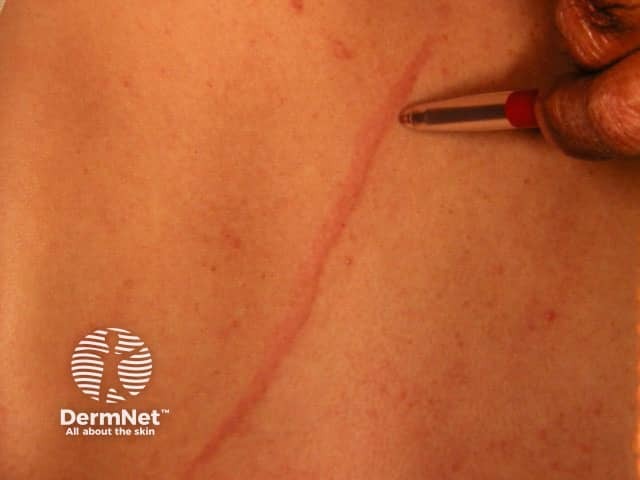
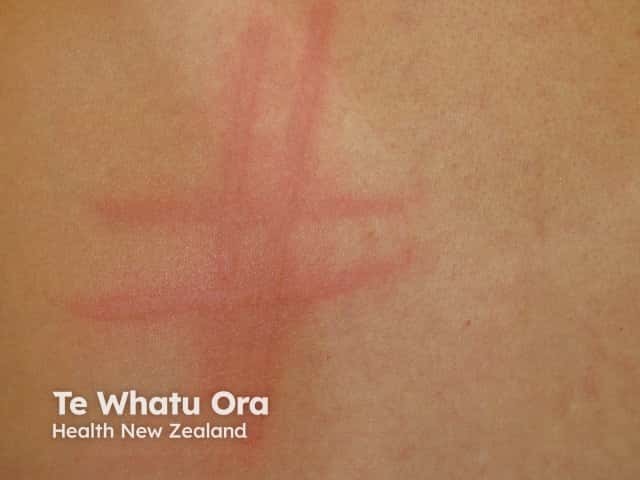
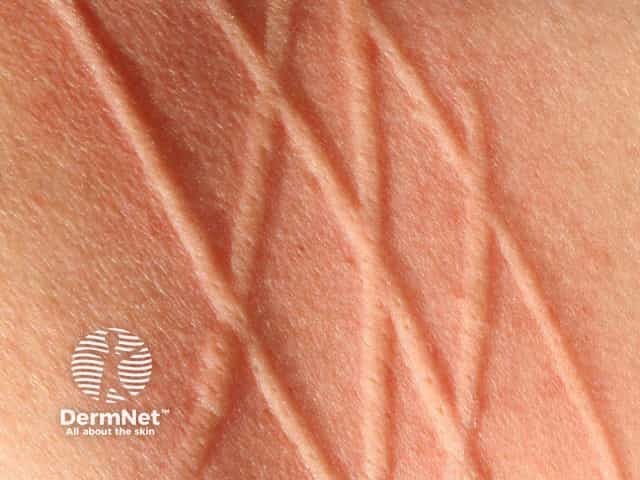
Dermographism
A skin biopsy is rarely required except occasionally to distinguish dermographism from mastocytosis. Histology of dermographism is nonspecific with oedema of the dermis with perivascular mononuclear cells.
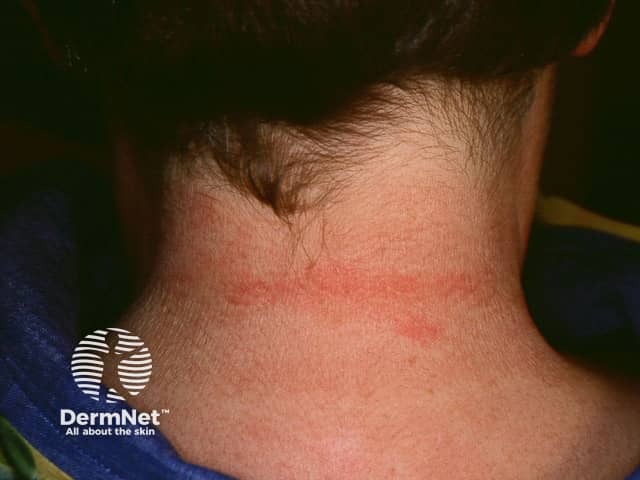
Pressure urticaria
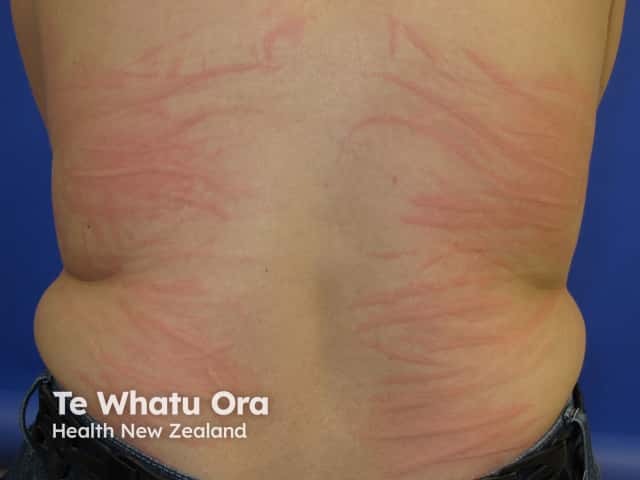
Symptomatic dermographism
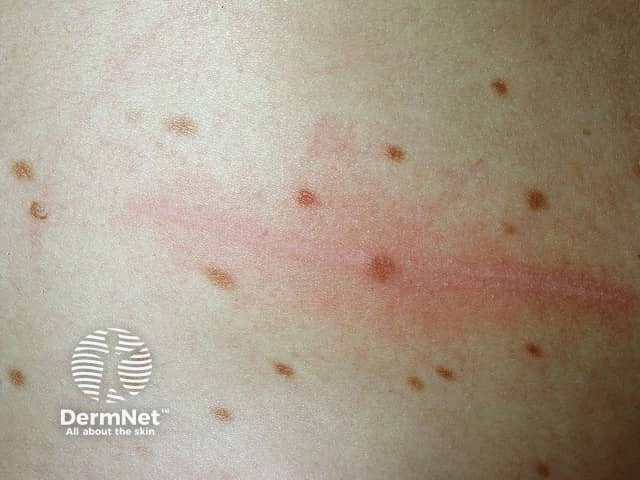
Cutaneous mastocytosis
Delayed dermographism appears to be treatment-resistant.
Dermographism can last for months or years, with idiopathic symptomatic dermographism typically persisting on average for 6 years. Red dermographism can improve within 6 months. Dermographism associated with a recognised trigger such as scabies lasts only days to weeks. Spontaneous resolution is common.